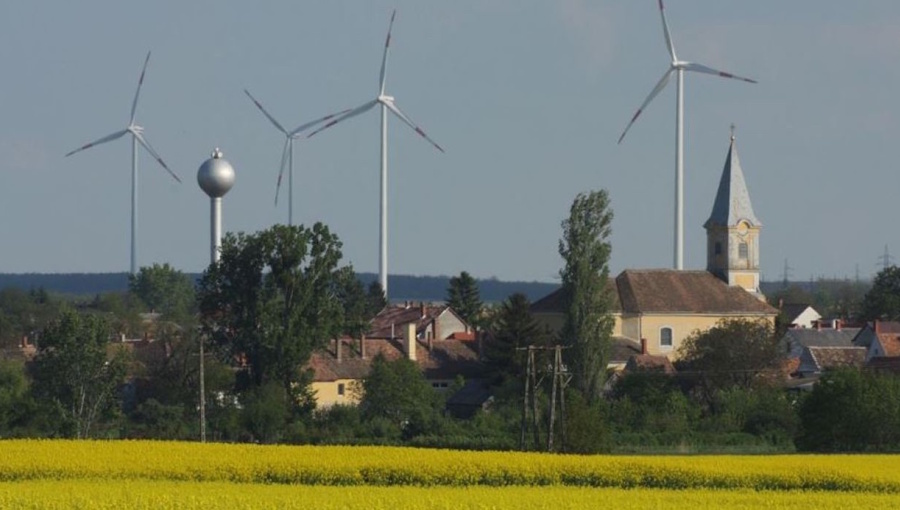Hungary bows to pressure from EU to relax tight rules on wind farms

Hungary has reached an agreement with the European Commission to overhaul the regulation of wind farms, which has effectively made it impossible for developers to set up wind turbines anywhere in the country, Energy Minister Csaba Lantos told news radio Inforadio on November 22.
In 2016, the Hungarian parliament passed a law that banned wind turbines within a 12-kilometre radius of populated areas. Up until now, the legislation left no area in Hungary where it would be possible to install new wind energy capacity.
The government agreed to reduce the 12-km radius to 700m. Wind turbines can’t be installed in dense areas, Natura 2000 sites, or UNESCO World Heritage sites, and the consent of local communities will be required for wind turbine installations.
The capacity of wind power plants is expected to rise from 330 MW to 1,000 MW by 2030, Lantos added.
On average the capacity of individual wind turbines in Hungary is around 5-6 MW, below a third of the capacity of modern offshore wind farms. The number of new turbines would not necessarily have to rise substantially, if current turbines are upgraded, analysts pointed out.
The amended National Energy and Climate Plan (NEKT) envisions boosting the share of renewable energy in final consumption from 21% to 29% by 2030. This includes the increase in the share of solar energy as well. Installed solar capacity has risen to 5.5 GWh, which is set to reach 12 GWh by 2030, double the initial target.
Hungary’s RRF plan also targets major infrastructural funding for renewable projects. One of the criteria set by the EU for Hungary to access €5.8bn in RRF funds in addition to the €3.9bn credit leg of RRF was to amend restrictions on wind energy. Overall, the government needs to meet all 27 super milestones set by the EU.
Lantos announced major changes in water fees, which effectively means an increase in bills paid by non-residential users. The unified fee will consist of a basic fee and a consumption-based fee.
Currently, there are 38 municipal water service providers in the country and the tariffs differ greatly. The government has begun to take over these firms from local governments, which are transferring ownership as companies have incurred huge losses since the government froze prices in 2013.
Lantos acknowledged that utility companies were underinvested due to the lack of resources and that the government needs to prop them up by HUF150bn in 2023. Industry experts and opposition politicians put the amount of investment required to modernise the ageing utility network in the multi-trillion forint range.
Local governments in the vicinity of Budapest ordered mandatory water use reductions last year during the worst drought in 100 years. Water utility firms failed to supply water to densely populated areas near the capital due to elevated demand, an unprecedented phenomenon in Hungary, rich in natural water reservoirs.



Follow us online